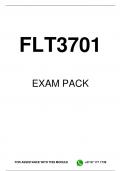Summary
Summary fluid and electrolytes
- Module
- Fluids and electrolytes
- Institution
- University Of Buckingham
an in-depth explanation on the structure of the plasma cell membrane and movement of electrolytes across the membrane. if you are also struggling with differentiating the use of colloid and crystalloid the file is for YOU.
[Show more]












